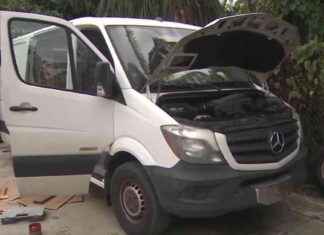The El Prat and Barajas airports face their future in the opposite way. While the renewal of the first remains fallow and pending the electoral result of 23-J, the extension of the second is already a reality. The extension works of the Madrid airport will start this summer in the area of ??the T4 security filters, thus inaugurating the actions of the megaproject with which Aena wants to increase the capacity of Barajas and take it to the next level. The objective: to compete face to face with the large European airport nodes and consolidate it as a bridge between Asia and Latin America.
The first works of the expansion have been awarded to the Elecnor company for an amount of more than 9.78 million euros, according to the tender published by Aena on its recruitment portal. The machines will start working at the terminal this summer, probably between the end of July and the beginning of August, although logic suggests that the bulk of the work will be concentrated after the holiday season, when the volume of passengers drops. It is the method followed in the vast majority of airport works to minimize distortions. The execution period to extend the security filters will last about three years and will consist of different phases.
The expansion project as a whole will mobilize 2,400 million euros, of which 1,700 million will be allocated to the actions in T4 and its satellite and another 700 million to the new processor and the remodeling of terminals 1, 2 and 3. Apart from the almost 10 million euros with which the works begin, the current Airport Regulation Document (DORA II) for the period 2022-2026 plans to allocate a total of 402.97 million to the Barajas extension. The rest of the investment will be charged in the next DORA, starting in 2027.
The Ministry of Transport calculates that Barajas will increase its contribution to the GDP of the Community of Madrid from the current 9.3% to 12% thanks to this operation. The Madrid airport, with a current capacity for 70 million passengers, already has 30% of passengers in transit and a market share of almost 26% on routes with Latin America. A position that the airport manager wants to reinforce with the renovation of the airport and to which the merger between Iberia and Air Europa will contribute, pending final authorization from Brussels.
But if Barajas advances, the Barcelona airport continues to wait for the negotiation tables to which the ERC and the PSC were summoned after the budget pact in Catalonia. Aena’s initial project for El Prat included an investment of 1,700 million euros to extend the third runway by 500 meters and build a satellite terminal. In this way, they wanted to increase the passenger capacity, currently set at 55 million per year, and promote long-haul flights, part of which cannot take off from the sea runway as it is too short. In 2019, the year before the pandemic, the airport touched its maximum capacity, with almost 53 million travelers that put pressure on its operations. This 2023 the airport is close to that record number.
The disagreement between the Catalan Government and the central Executive paralyzed the enlargement, but Catalan Republicans and Socialists reactivated the dialogue and agreed to resume talks between September and October of this year. Now, the advancement of the elections on July 23 introduces new uncertainty about the future of the airport. The result of the elections and subsequent government agreements will have a direct impact on the infrastructure.
Also in Catalonia a new phase opens with the remodeling of the Government. The change of headlines in Territori and Medi Ambient could give a new focus to the talks about the airport, since the previous managers, Juli Fernàndez and Teresa Jordà, had been very critical of the extension of the airport due to its impact on the natural space from La Ricarda. In any case, it is ERC that must mark the position of the Government.








